
Bloodwych is a dungeon role-playing video game, a dungeon crawler, developed for the Amiga, Atari ST, MS-DOS, Amstrad CPC, Commodore 64, and ZX Spectrum. Its box featured artwork by Chris Achilleos. The plotline identifies the player as a champion of Trazere who, after recruiting up to three fellow champions, travels through dungeons and mazes fighting creatures along the way to find and destroy the evil Zendick, and banish the Lord of Entropy.

Skate or Die! is a skateboarding video game released by Electronic Arts (EA) in 1987 for the Commodore 64. It is EA's first internally developed game. Versions for the Apple IIGS, MS-DOS, Amstrad CPC, and ZX Spectrum followed. It was ported to the Nintendo Entertainment System by Konami, published under the company's Ultra Games branding.
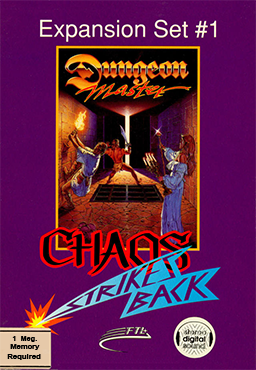
Chaos Strikes Back is an expansion and sequel to Dungeon Master, the earlier 3D role-playing video game. Chaos Strikes Back was released in 1989 and is also available on several platforms. It uses the same engine as Dungeon Master, with new graphics and a new, far more challenging, dungeon.

Captain Blood is a French video game made by ERE Informatique and released by Infogrames in 1988. It was later re-released in the UK by Players Premier Software.

The Faery Tale Adventure is a 1987 action role-playing video game designed by David Joiner and published by MicroIllusions for the Amiga, and later ported to the Commodore 64, MS-DOS, and Sega Genesis. The MS-DOS version is titled The Faery Tale Adventure: Book I. Microillusions also released a "Book 1" version for the Amiga which was going to be the start of a series of games, according to Talin, but bankruptcy prevented it. The initial version was produced for the Amiga 1000 and featured the largest game world to that date. A sequel, Faery Tale Adventure II: Halls of the Dead, was released in 1997.

Rick Dangerous 2 is a platform game developed by Core Design for the Amiga, Atari ST, Amstrad CPC, ZX Spectrum, Commodore 64, and MS-DOS. It was released in 1990 and published by Micro Style as a sequel to Rick Dangerous.
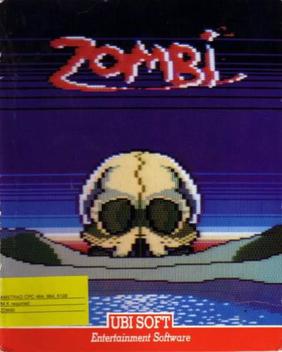
Zombi is an icon-driven action-adventure video game. It was Ubisoft's first publication, released in 1986. It was programmed by Yannick Cadin and S. L. Coemelck, with graphics by Patrick Daher and music by Philippe Marchiset.
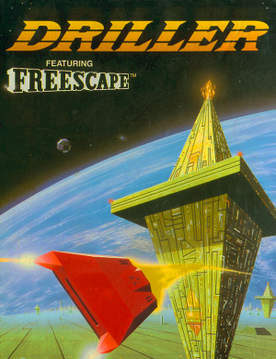
Driller is a 1987 puzzle video game. It was written by British developers Major Developments and published by Incentive Software for the ZX Spectrum, Commodore 64, Amstrad CPC, Amiga, Atari ST, and MS-DOS. It uses the Freescape 3D game engine.
Freescape is a video game engine, an early 3D game engine used in video games such as 1987's Driller. Graphics were composed mostly of solid geometry rendered without shading.
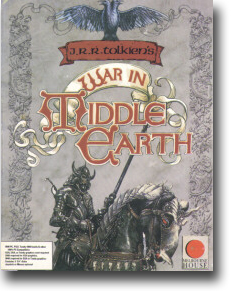
War in Middle Earth is a real-time strategy game released for the ZX Spectrum, MSX, Commodore 64, Amstrad CPC, MS-DOS, Amiga, Apple IIGS, and Atari ST in 1988 by Virgin Mastertronic on the Melbourne House label.

Vixen is a platform game published by Martech in 1988 for the Amiga, Amstrad CPC, Atari ST, Commodore 64, MS-DOS, and ZX Spectrum.

Dark Side is a 1988 video game published by Incentive Software for the Amiga, Atari ST, Amstrad CPC, Commodore 64, IBM PC compatibles, ZX Spectrum, and Sharp MZ-800. The game is a sequel to Driller, set in the Evath system but this time on Evath's second moon Tricuspid.
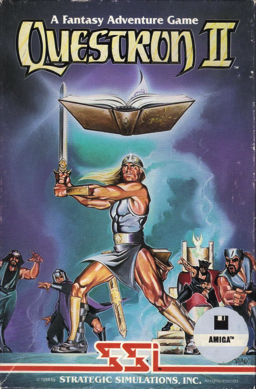
Questron II a 1988 role-playing video game published by Strategic Simulations for the Apple II, Apple IIGS, Atari ST, Commodore 64, IBM PC, and Amiga. It is the sequel to 1984's Questron. The story and original design is credited to Quest Software, the programming and artwork is credited to Westwood Associates.

The Hunt for Red October is a video game based on the 1984 book The Hunt for Red October by Tom Clancy. It was released in 1987 and was available for the Atari ST, Amiga, Apple II, Macintosh, ZX Spectrum, MSX, Commodore 64, and IBM PC. A port for the Apple IIGS was released in 1989. The game is a combination of submarine simulator and strategy game. The player navigates the Red October towards U.S. waters while avoiding the Soviet Navy.
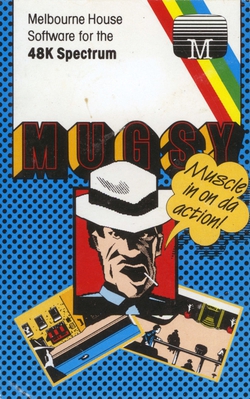
Mugsy is a strategy and management computer game for the 48K ZX Spectrum. It was well-received, mainly due to its innovative graphic style, and was followed two years later by a sequel.

Monopoly is a 1985 multi-platform video game based on the board game Monopoly, released on the Amiga, Amstrad CPC, BBC Micro, Commodore 64, MS-DOS, MSX, Tatung Einstein, Thomson MO, Thomson TO, and ZX Spectrum. Published by Leisure Genius, this title was one of many inspired by the property.

Legend of the Sword is a 1988 fantasy interactive fiction video game developed by Silicon Soft and published by Rainbird Software for the Atari ST. Ports for the Amiga and MS-DOS were released later. A Macintosh version was expected to release shortly after the Atari ST version but was never released. A sequel, The Final Battle, was released in 1990.

Mickey Mouse: The Computer Game, also known as just Mickey Mouse, is an action game developed and published by Gremlin Graphics in 1988 for the Amiga, Amstrad CPC, Atari ST, Commodore 64, and ZX Spectrum.

Ghostbusters II is a 1989 action game based on the film of the same name. It was published by Activision for various computer platforms. British studio Foursfield developed a version for Commodore 64, Amiga, Atari ST, Amstrad CPC and ZX Spectrum, which also got ported to the MSX by New Frontier. It features three levels based on scenes from the film. Dynamix developed a separate version for the DOS, also based on the film. The non-DOS versions were praised for the graphics and audio, but criticized for long loading times, disk swapping, and the final level. The DOS, Commodore 64 and Amiga versions were the only versions released in North America.
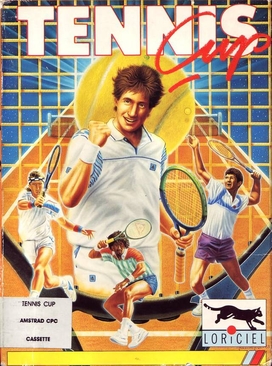
Tennis Cup is a 1990 tennis video game developed and published by Loriciel for the Amiga. It was ported to the Atari ST, MS-DOS and Amstrad CPC during the same year. Tennis Cup was ported to TurboGrafx-16 in 1991 as Davis Cup Tennis. Versions for the Super Nintendo and Mega Drive/Genesis were released in 1993.




















